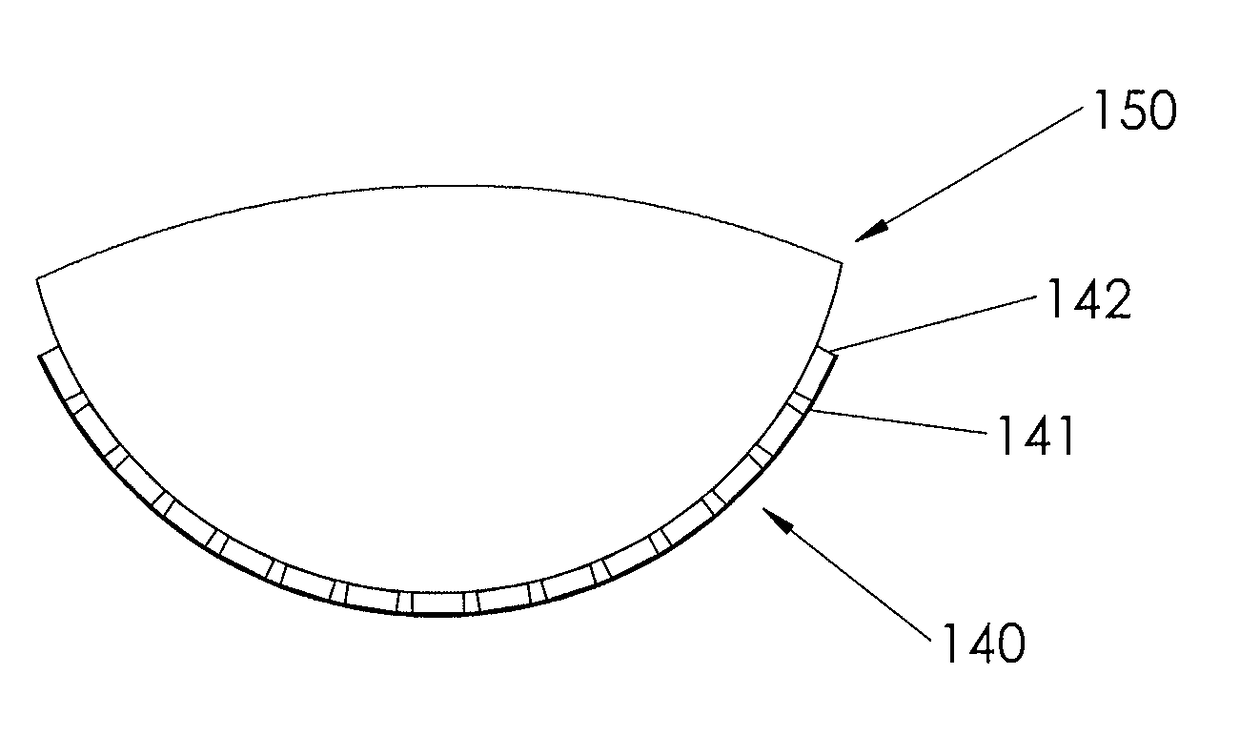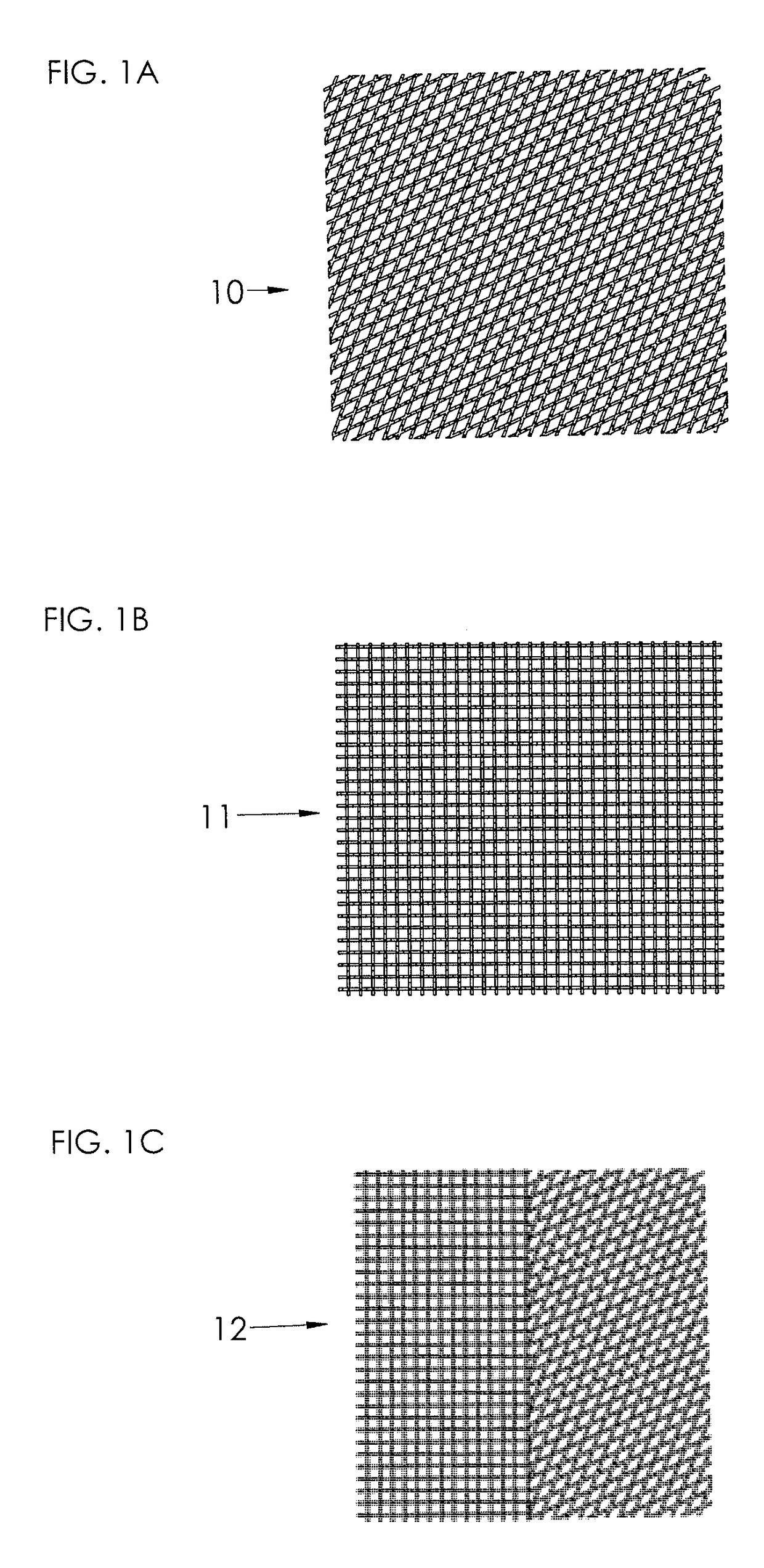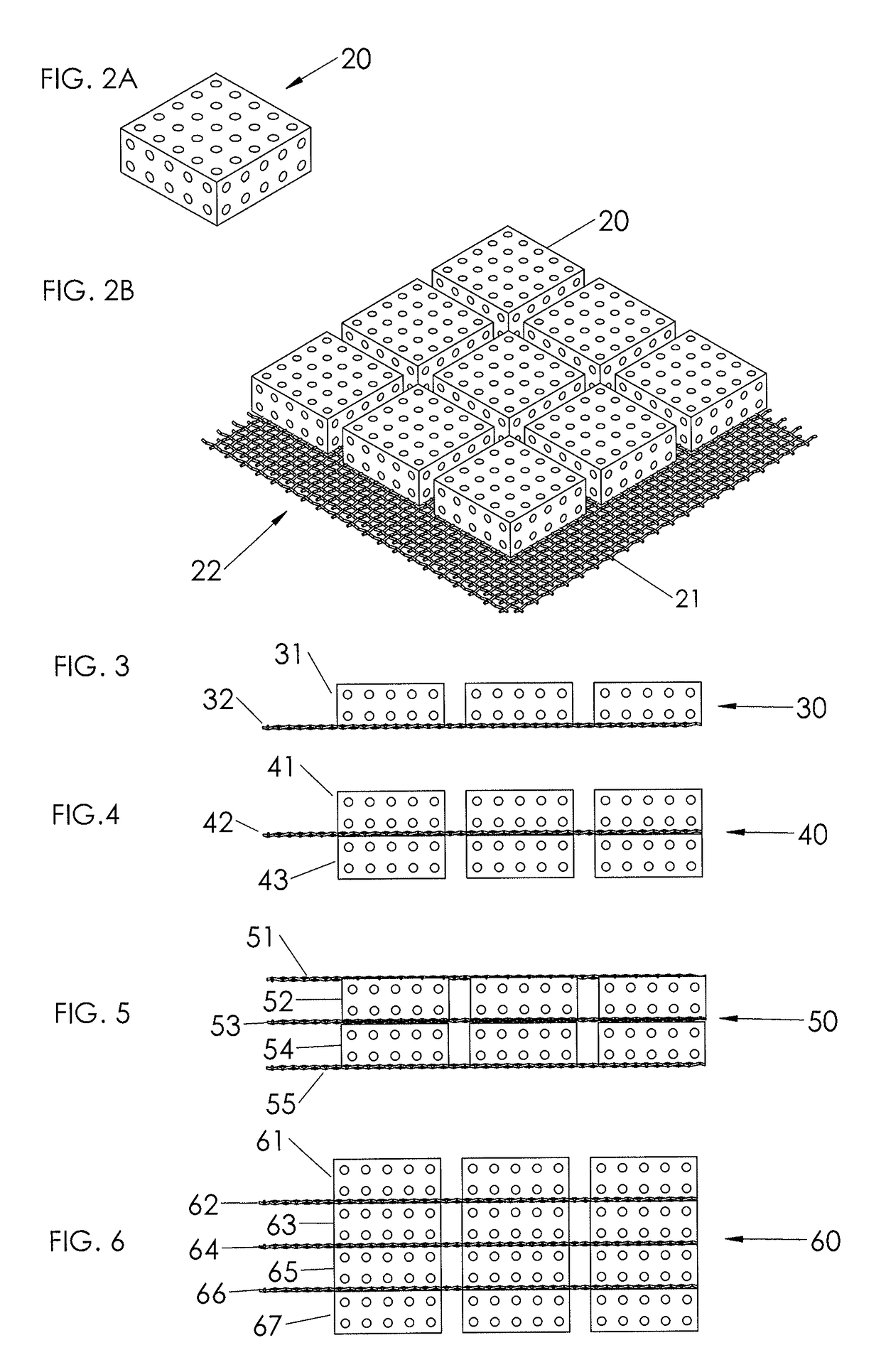Three-dimensional medical implant
a three-dimensional, medical implant technology, applied in the field of medical technology, can solve the problems of increasing the number of such devices in the market, difficulty in providing a scaffold that fits the surgeon's needs in terms of tissue regeneration, ease of use and problem-free healing, and difficulty in combining different scaffold characteristics or even different materials into one scaffold, etc., to achieve adequate pliability and mechanical rigidity, rapid tissue ingrowth, and adequate pliability
- Summary
- Abstract
- Description
- Claims
- Application Information
AI Technical Summary
Benefits of technology
Problems solved by technology
Method used
Image
Examples
Embodiment Construction
[0038]FIG. 1A illustrates schematically a mesh 10 which has rhombic or diamond-shaped openings, which may be obtained by warp knitting using atlas type pattern or interlaced pillar pattern. The mesh as such is previously known in the art.
[0039]FIG. 1B illustrates schematically a mesh 11 which has square-shaped openings, which may be obtained by open woven structure or warp knitting using double marquisette combined with pillar stitch. The mesh as such is previously known in the art.
[0040]FIG. 1C illustrates schematically a mesh 12 which is a combination of a mesh 10 and a mesh 11.
[0041]FIG. 2A illustrates schematically a perspective view of a volume-building component 20 according to the present disclosure consisting of a scaffold component. The dotted pattern of the volume-building component is not to be construed as illustrating holes or pores in the material, but is solely meant to illustrate any type of volume-building component, irrespective of the structure or composition of t...
PUM
| Property | Measurement | Unit |
|---|---|---|
| distance | aaaaa | aaaaa |
| distance | aaaaa | aaaaa |
| melting point | aaaaa | aaaaa |
Abstract
Description
Claims
Application Information
 Login to View More
Login to View More - R&D
- Intellectual Property
- Life Sciences
- Materials
- Tech Scout
- Unparalleled Data Quality
- Higher Quality Content
- 60% Fewer Hallucinations
Browse by: Latest US Patents, China's latest patents, Technical Efficacy Thesaurus, Application Domain, Technology Topic, Popular Technical Reports.
© 2025 PatSnap. All rights reserved.Legal|Privacy policy|Modern Slavery Act Transparency Statement|Sitemap|About US| Contact US: help@patsnap.com



